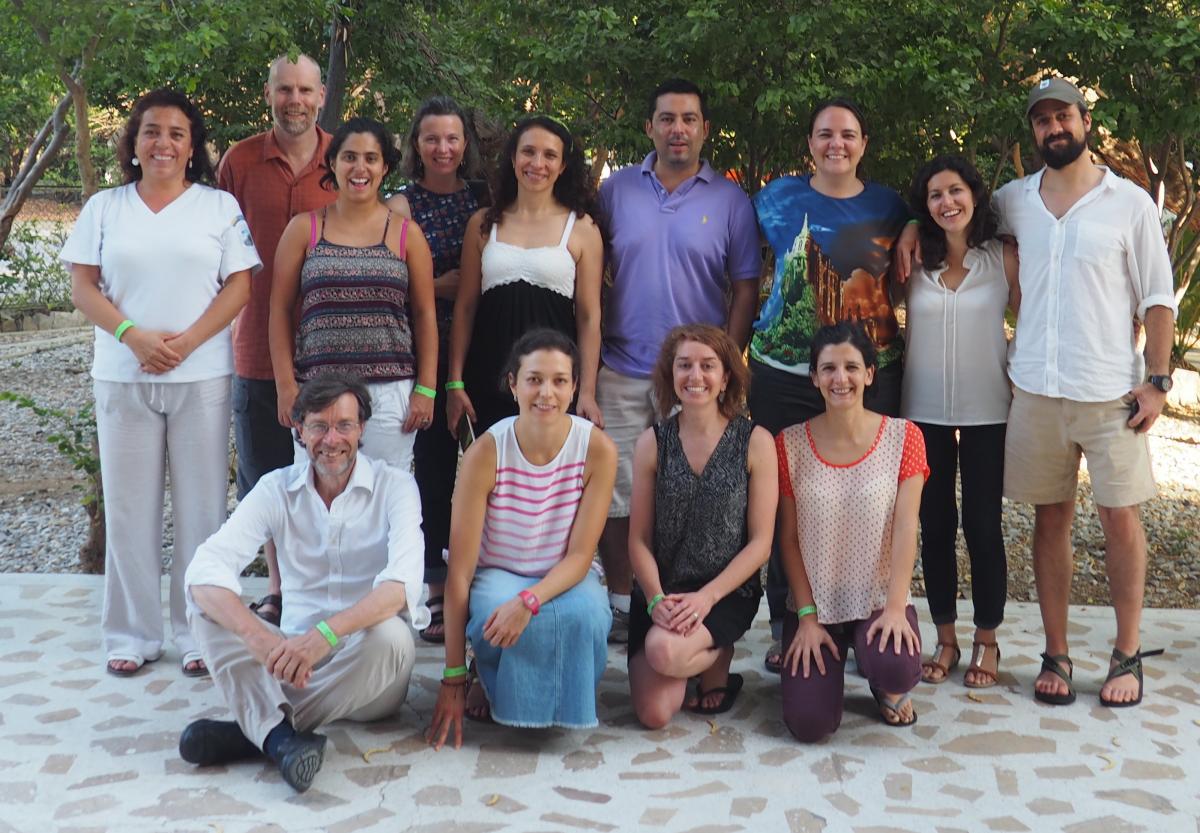Conservation Futures, enabling adaptive planning in protected areas
CEESP News - By Claudio Munera, Carina Wyborn & Nigel Dudley
In a changing world, conservation strategies must also adapt and change. Conservation Futures is a project led by the Luc Hoffmann institute in collaboration with WWF Colombia, the Australian National University, CSIRO and Equilibrium Research, working alongside Parques Nacionales Naturales de Colombia to provide them with critical information needed to maintain biodiversity and ecosystem services in protected areas under climate change.

Conservation Futures Collaborative Research Team, with staff members from Parques Nacionales Naturales de Colombia and WWF Colombia during a workshop in Santa Marta, Colombia
Photo: Carina Wyborn
This requires the development of interdisciplinary methods that connect projections of climate impacts with social science insights into policy and management challenges. This “Futures Thinking” will help protected area planners and managers to look ahead many decades and take decisions in the context of change and uncertainty. The approach recognises that, to be useful, scientific research on climate change must be coupled with an understanding of how information will be used by decision-makers.
Maintaining protected areas in a healthy condition under climate change requires scientific knowledge that is relevant, accessible and easily integrated into policy, planning and management. In this way the Conservation Futures project is looking to support adaptation of protected area benefits for biodiversity conservation, local communities and economies. Working in two pilot sites (the Amazon piedmont and the Coffee Growing region) the project aims to ensure that adaptation and the future expansion of the protected area network draws on the best available scientific knowledge to maintain ecosystem services in the face of climate change.
The overall goal of the project is to generate relevant scientific knowledge of climate impacts on biodiversity and ecosystem services in protected areas and build the capacity of protected area agencies to anticipate and respond to long-term social and ecological change in planning and management. Protected areas are key in helping communities and nature adapt to a changing climate. They build resilience to climate change globally, mitigate the impacts of climate events, ensure provision of key ecosystem services and protect biodiversity. Now is a critical time to take action on international commitments to ensure that planning and management is based on the best available scientific knowledge to ensure that protected areas provide benefits for society, now and into the future.
Working through a Collaborative Research Team with specialists from social and biophysical sciences, policy and practice backgrounds, we are implementing a participatory methodology and workshops to understand stakeholders’ needs and identify those aspects that may enable or constraint integration of scientific information into protected area policy, planning and management at both national and local level. Technical assessments are undergoing in the pilot sites to assess climate sensitive values of protected areas, for both managers and local communities that are dependent on protected areas benefits. The project is also looking to create regional engagement through protected area management authorities, to support WWF Colombia and Parques Nacionales Naturales de Colombia to implement the REDPARQUES Declaration, in which 18 Latin American countries explicitly recognised the role of protected areas in mitigating and adapting to climate change.
Members of both IUCN CEESP and IUCN WCPA are involved in the Conservation futures project.
Authors and contacts:
- IUCN CEESP:
Claudia Munera
Australian National University
- IUCN WCPA
Carina Wyborn
Luc Hoffmann Institute
Nigel Dudley
Equilibrium Research
